One of the oddities of film in recent years has been the re-birth of the 110 film format.
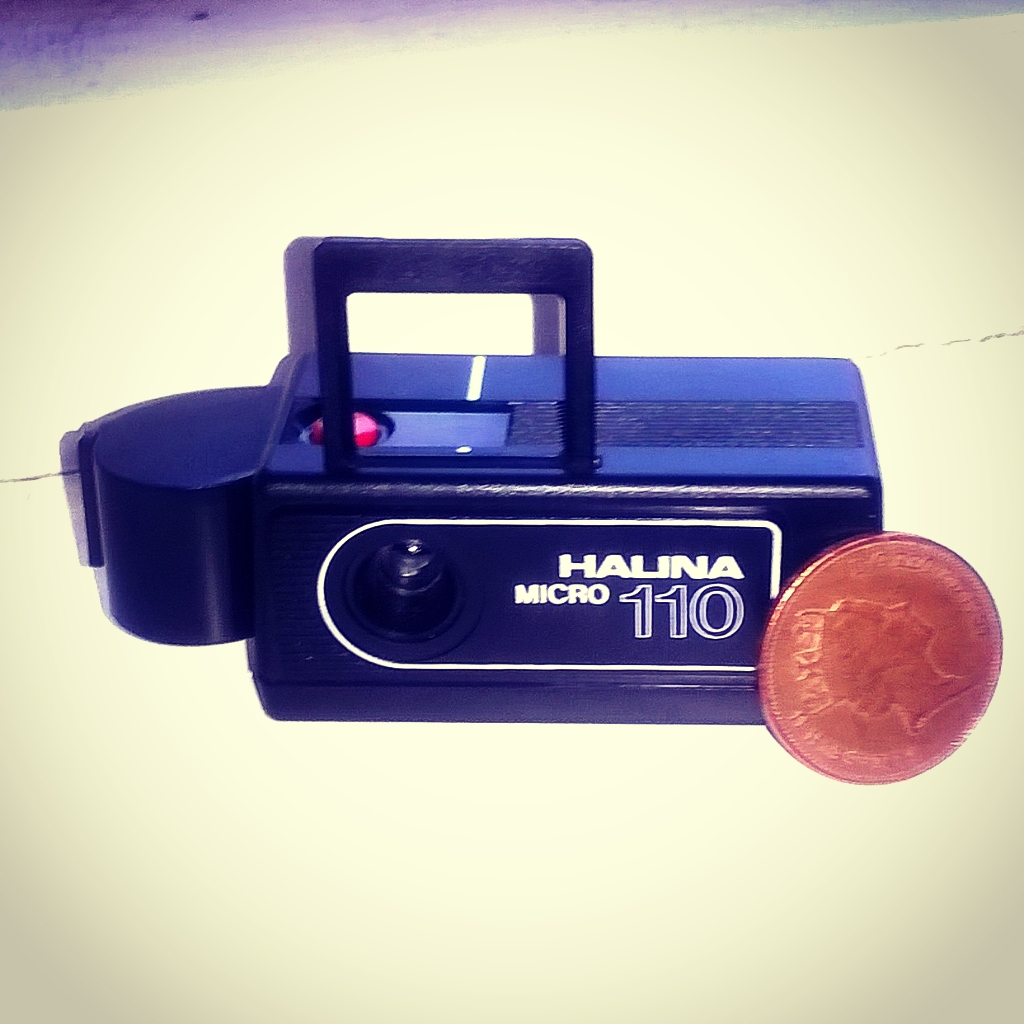
This quirky easy load camera system has new cameras from the likes of Lomography and Superheadz as well as a massive amount of second hand stuff out there. But should you bother ?
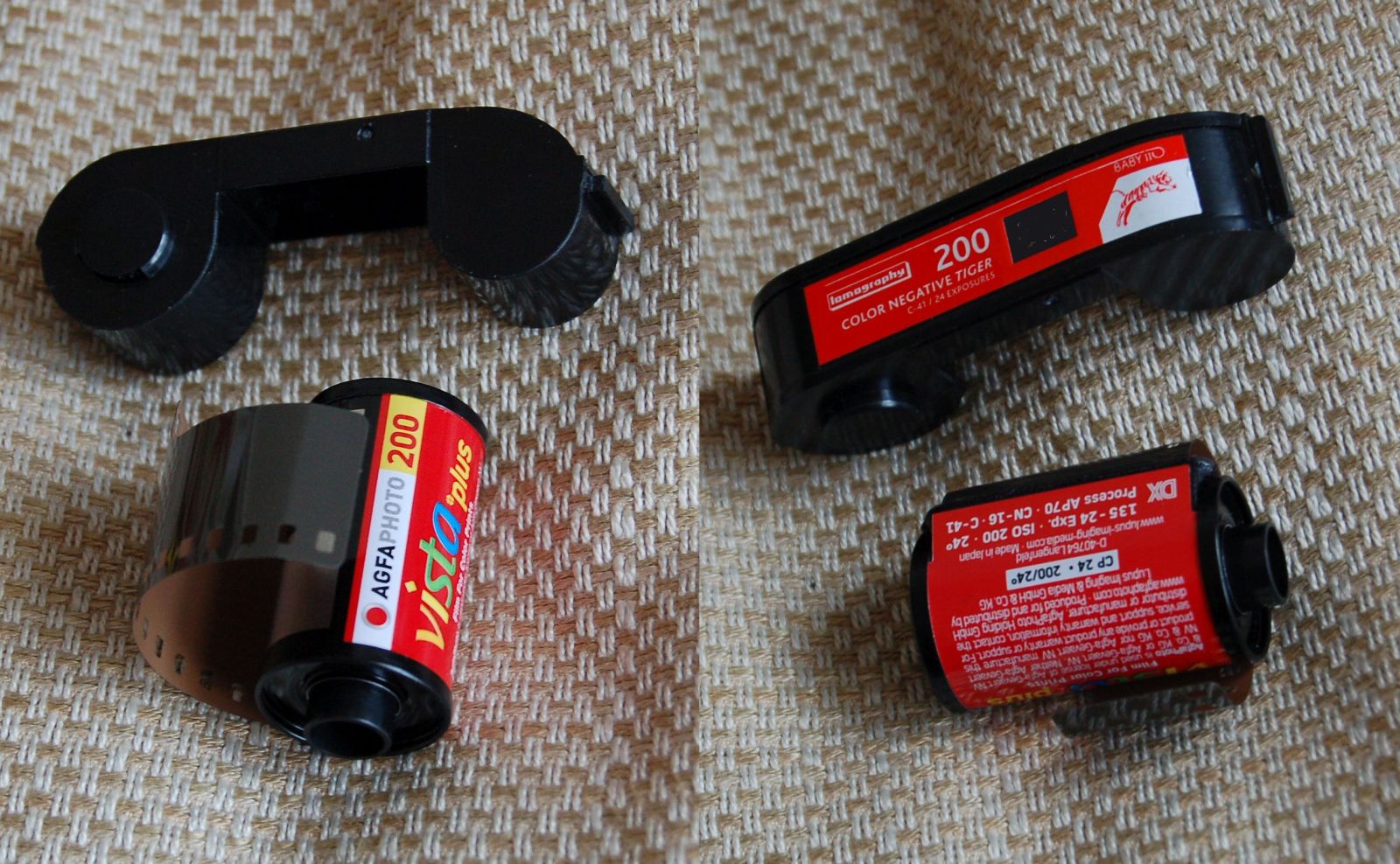
The rise and fall and subsequent rebirth of 110 is interesting. Kodak launched it in 1972 as a follow on from their successful 126 cartridge film system. Both films were designed to be easy load and and relatively fool proof and intended for the mass market. 110 allowed Kodak and other manufactures to make much smaller cameras however and arguably Kodak’s decision was probably influenced by subminature cameras using 8 or 16mm film like the Legendary Minox cameras. Whilst some of these used cartridge systems Kodak effectively standardised a system and knocked out competing standards overnight.

in some ways the 110 is simple a smaller version of the 126 cartridge and shares similar 50’s design features. Oddly the film is paperbacked which made sense with the 126 in the 1950s but by 1972 seemed anarchic. Like 126 there is no need to rewind when finished. The film is 16mm wide but takes a 13x17mm frame (about a 1/4 the area of 35mm film.

This might seems small and as 110 film was aimed squarely for the consumer market and so was intended for cheap cameras. Because of this and issues about optically enlarging such small sized negatives it was often seen as a poor choice for anyone a bit more serious. However modern scanning reduces these issues and to put into context 110 frame size is still much bigger than the frame of most compact digital cameras (the micro 4/3 seen on some CSC and DSLR is approximately the same size). The size allowed very small cameras to be made in the 1970’s often following the minox and other submini designs but you also got slew of novelty cameras and ones based on existing designs such as the tiny interchangeable lensed Pentax auto 110 SLRs.
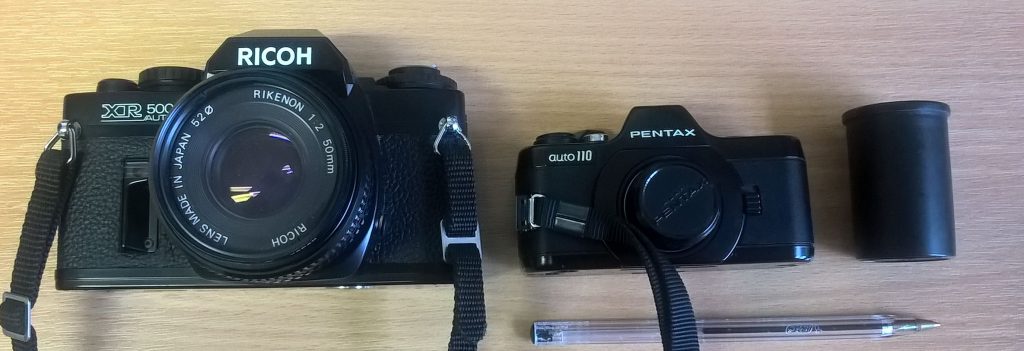
Although the arrival of digital cameras was its death knell when production ended in 2009 arguably even if Digital hadn’t taken off the writing was on the wall. 35mm cameras were becoming smaller and the rival more modern APS format was launched in 1996. This allowed for smaller cameras still, storage of more technical detail and more compact film cartridges but with bigger frames (APS-H frame 30.2 × 16.7 mm). APS however had a pretty short run due to the rise of digital ending production just 2 years after 110 film
Fujifilm were the last bastions of 110 production until 2009. But oddly that wasn’t the end of our story. In 2011 two manufactures reintroduced the . Lomography is the most widely available and they’ve made 110 B&W, Colour, Slide, and redscale films. Fukkatsu, the other marquee is rarely seen outside Asia or the US and is not probably best uttered in the pub. Lomography films are available usually around £4-6 a 24 exp cartridge with the colour negative tiger 200 being the cheapest (I’ve bought as low as £3.50). Lomography seem pretty committed to the format but have an effective monopoly. Worth also noting there are plenty guides online about roll your own 110 film should production cease again.
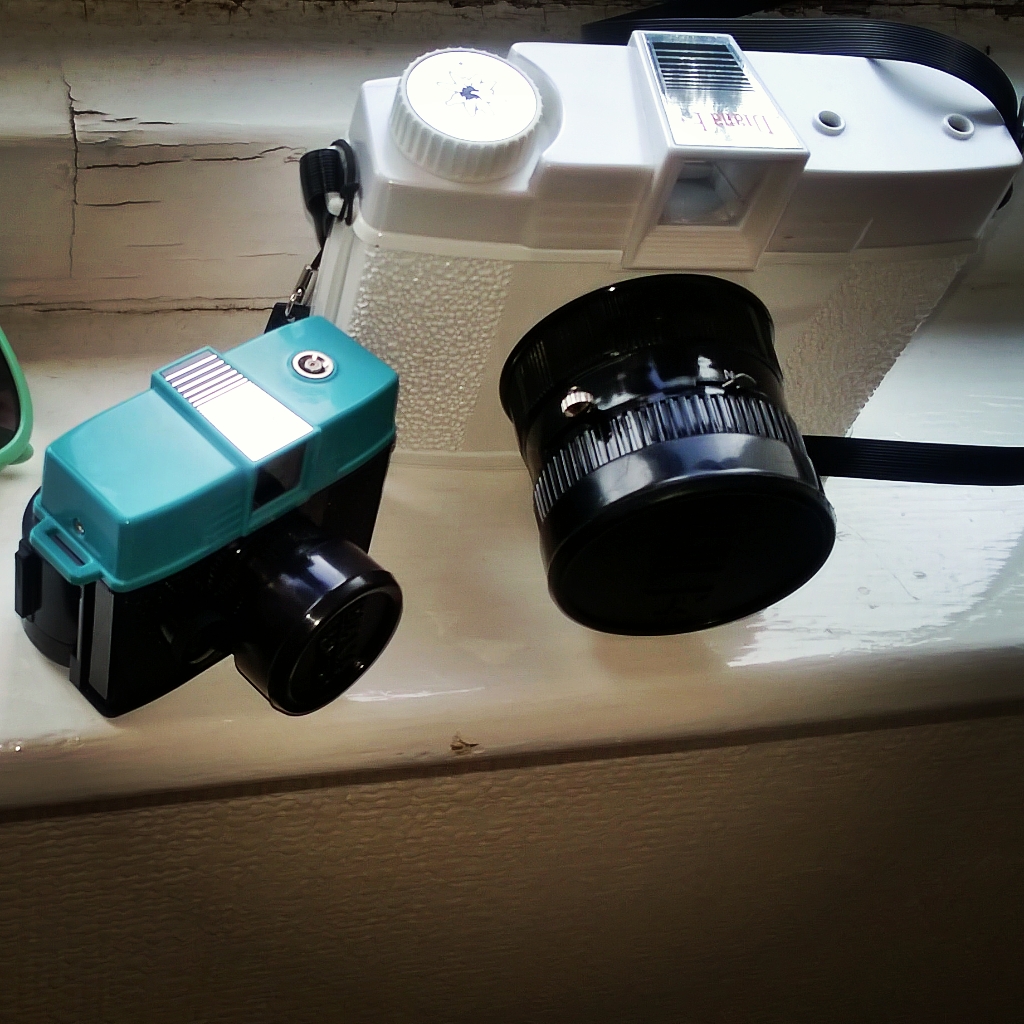
Of course Lomography didn’t entirely relaunch 110 film out of the goodness of their hearts (although one hopes there was a wee bit of that). They produced versions of their best selling Diana & Fisheye cameras in the format and Superheadz jumped on the bandwagon too. In fairness although most folk assume production of 110 cameras ended a few years prior to the film stopping, Holga produced a simple Holga Micro 110 (very similar to the older Halina Micro 110) and a flash dual lensed submini camera through this period.
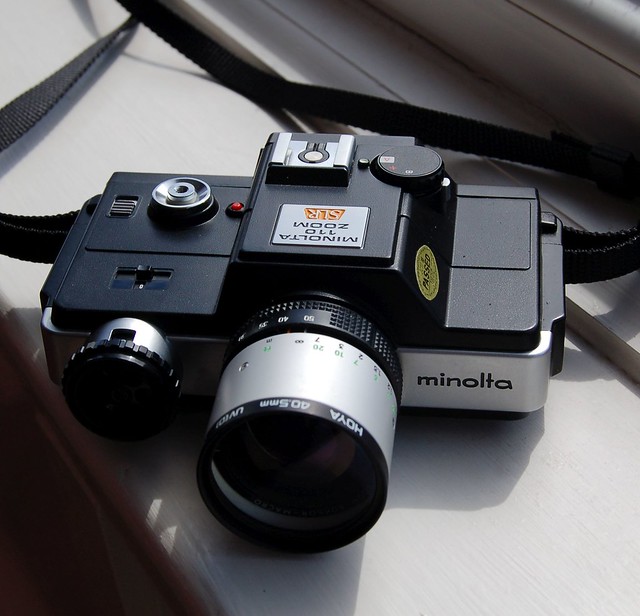
In addition to these new cameras. you have an incredible choice and it’s pretty easy to pick one up for not much in thrift or online auctions. Many cameras are basic fixed focus with no exposure or limited automatic control (not for the precision shooters granted but if you like your cameras lo-fi). But you can get more competent P&S, rangefinders and even the likes of 110 SLR including the Pentax 110 auto system (I got one for around a tenner with lens) and starship shaped Minolta 110 Zoom SLR.
Worth noting Cartridges have a ridge or tab at one end. In the past this would have been shortened to indicate higher speed films which some higher end cameras could sense. Newer films don’t alter the ridge so you may need to do this manually or use a ND filter if practical.
Perhaps the biggest issue at the moment is processing. The films use the usual chemicals and probably present little problem to the home developer other than minor gear changes. Labs on the other hand are a bit tricky. Most cheap labs can’t do them anymore and not all more professional labs offer a service. If you do find a lab costs will be higher.
I’ve picked up a few and will be posting how I get on
Why Bother
- Cameras are really cheap second hand
- You’d be supporting film expansion
- Film now available at kodak professional film prices
- Quirky format better thanks to digital scanning
Why not
- Processing availability and increased cost
- No such thing as a Poundland 110 film
- Dependant on Lomography for easy ongoing production
- 1/4 of a 35mm frame
- Many cameras are very lo-fi
- New cameras comparatively pricy
- It died before for a reason. Does it need a comeback ?

Hi, I have just bought 3 110 Cameras this moning a boot sale in Belgium; cost £10.
The models are
1) Halina STB Flashmatic 110 Tele – just the camera, but it is in as new condition.
2) Minolta Autopak 430E – camera and original soft case, again as new condition.
3) Agfamatic 2008 – camera and original box with manual etc and as new condition.
Very pleased with purchases; there is a photo shop only around 30 minutes from my home; which has a very large stock of films of most formats kept in a a freezerand he does develop everything himself at a reasonable cost bar Slides has, which he has to send out to someone with a turn around of approx 2 weeks.
By the way, I remember the old 110 cameras with effection buying my first basic Kodak back in 1974; it was great for “sneeky” party photos as you could conceal the camera easily and have the photos developed before the “victim” woke up from their hanghover of the previous only to find out all their “friends” were having a good laugh. Happy days!
Thanks for your article; very fair and more over accurate.
Amusingly just waiting for films back on the first 2 you listed (and like you the Autopak came with case, the halina didn’t)